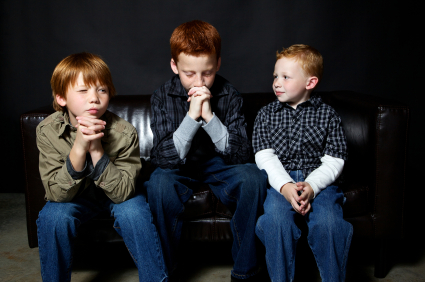
When parents practice different faiths, stress beliefs not truths
A person’s faith is comprised of not just beliefs but actions as well. Parents with different faiths teach their children not just by talking about their beliefs but also by engaging in behaviors that express their faith. As long as both partners recognize they do not have the ultimate truth and respect the other parent’s right to believe and express their spirituality differently, children in interfaith families can feel enriched rather than conflicted.
It is much easier for parents to incorporate diverse theologies and even differing spiritual expressions if they take “facts” and “truth” out of the equation and focus on beliefs instead. Obviously, the statement “I believe when people die they go to a wonderful place where they are reunited with loved ones, but Daddy does not,” is much easier for children to synthesize than someone who says, “Daddy is wrong, people go to Heaven when they die.” Using comments that are presented as beliefs rather than statements of fact leaves room for differences of opinion.
Along with our statements of belief, however, it’s important for us to explain how our spiritual practices relate to our beliefs. This can make the intangible idea of belief more concrete for children who are still literal thinkers unable to fully process the idea of two authority figures who present very different ideas. Expressing why Mommy meditates but Daddy prays to a higher power can be presented as a difference of tastes—just as one mother likes to drink coffee while another prefers herbal tea—but we can also communicate how what seems very different can really be the same. Meditation and prayer, for example, can be described as two different ways of accomplishing much the same thing: They can both be considered spiritual practices that connect us to the world greater than ourselves, help us to center our thoughts, and express our spiritual needs.
Children in all families need clarification of who they are, and children raised in interfaith families are no different. Religious identity offers children a solid base to branch out from, with holidays to celebrate and rituals to express their beliefs. It also affirms their family’s identity, particularly when their religious beliefs or practices are different from other children they know. When parents lovingly agree to disagree or communicate their needs in compassionate understanding, children in interfaith families gain a rich heritage of religious tradition and an intrinsic understanding that there are many different beliefs in the world—and even more ways of expressing those beliefs.
If you are raising children in an interfaith family, what advice would you share with other parents with divergent religious beliefs and practices?
Photo above ©2010 James Pauls/iStockphoto







